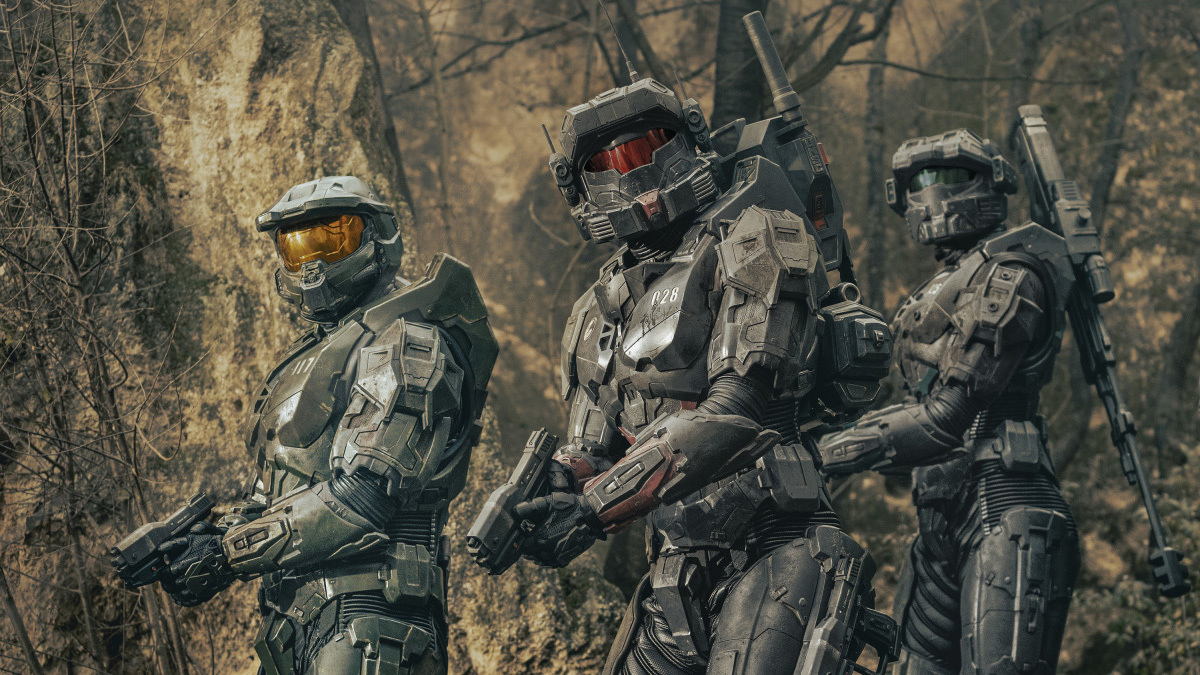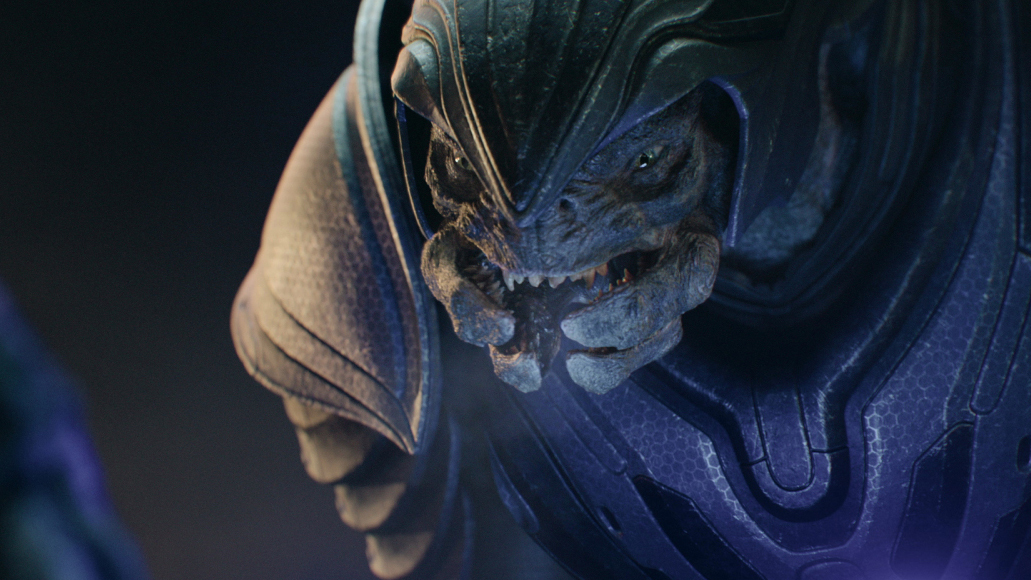What a long, strange trip it’s been to adapt Halo into a TV series. The project was first developed–Steven Spielberg executive producing–to be released in 2015. Of course, that never happened. Since then, potential release dates in 2019 and 2020 have passed, leading us to now. Halo has finally arrived on Paramount+ with Spielberg still on board as an executive producer, bringing Master Chief and the fight against the Covenant alien race out of the games and into live-action.
After so long, though, it’s easy to wonder if it was worth the wait. Honestly, there are many who assumed the show would never simply see the light of day. Now that it’s here, though, we are pleased to report Halo is actually very good. It’s a gorgeous and epic look at the Halo universe that feels right at home with the games you know, while not being bound to their events. The Halo TV series exists in its own canon within the franchise, meaning you don’t have to worry about it bumping up against events you may know from the games, novels, or anything else that expounds on Halo’s lore.
That’s the best thing about this series. When something you love is adapted into another medium and set in the same canonical timeline, things can easily get messy. Character presentations have to be perfect and the possibility of breaking continuity becomes all too real.
The Halo TV series, though, is telling its own story. Many of the same characters and situations are featured, but this show isn’t directly connected to the games. Instead, this is essentially a different version of Master Chief fighting a different war against a different Covenant. This is incredibly helpful not just for fans of the series, but for those new to Halo.

And for those who are newer, a bit of a primer may be necessary. In the 26th century, humanity is facing the threat of extinction by an alien race known as the Covenant. A group of supersoldiers known as the Spartans are the best option to fend them off. Master Chief leads the Spartans in this fight, though he’s slowly starting to realize that those calling the shots above him may not be the innocent good guys they project themselves as being.
Anchoring the series as Master Chief, otherwise known as John-117, is Pablo Schreiber (Orange Is the New Black). He’s a good fit for the new role, excelling as someone guarding himself against showing any kind of emotion, though in the first two episodes provided for review by Paramount+, you see that veil starting to slip. As John learns details about those he’s fighting to save, he’s clearly beginning to question his own superpowered existence.
The big difference between this Chief and the one in the games is that you actually see his face on the TV series. It’s one of the questions fans wondered most about, including myself, especially after the launch of Disney+’s The Mandalorian–a show in which the title character wears a helmet almost the entire time. The idea of seeing Master Chief unmasked seemed wrong. However, the show does it in the first episode and not only does it work, it’s hard to imagine the show any other way.
In the game, you play the role of Master Chief. As such, he is essentially an avatar of the player, allowing them to cast whatever they want on the character. In your mind, unless you read the novels, Master Chief looks however you want him to look because he’s you. That’s not the case in the show, though. Instead, Chief is a fully defined character, whose backstory you will learn more about as the show rolls on. Grounding him in a human face and the ability to be vulnerable enough to remove the helmet in certain situations makes this version of Chief so much richer than he would have been otherwise.

As for the characters who surround him, it’s a mixed bag. There’s the UNSC (United Nations Space Command) side of the equation, which is essentially the space military fighting the battle against the Covenant. In the first two episodes, two primary figures stand out. Dr. Catherine Halsey (Natasha McElhone) is the mastermind behind the Spartan program and is for lack of a better term, the only parental figure John knows. McElhone’s take on Halsey is interesting, given her dedication to and borderline obsession with her special projects–including the Spartan program and a new experiment she’s working on that is revealed in the first episodes.
Her bond with John makes for not just an interesting dynamic between the two of them, but with Miranda Keyes–a UNSC officer and her biological daughter. It’s made clear in the first episodes that the two share practically no relationship at all, due in large part to how driven Halsey is. Exploring just how deep the strain between them goes provides a lot of interesting fodder for the characters–and potentially between Miranda and Chief, should they cross paths.
Then there’s the people John knows outside of the UNSC. His primary sidekick, at least in the first couple of episodes, is Kwan Ha (Yerin Ha), a young woman he rescues from a settlement after the Covenant devastates its population. She’s untrusting of the Spartans but finds herself tied to Chief as a means of survival–and becomes a pivotal part of his journey of self-discovery. Ha and Schreiber share an easy chemistry, making for a great pair to travel space together.
Lastly, we need to talk about Bokeem Woodbine’s character, Soren. Like John, Soren was training to be a Spartan, but escaped before training could conclude. Now, he’s living life essentially outside of the law, leading some form of underground society that refuses to answer to the UNSC. This particular character is a deep cut from the Halo universe, after appearing in the Halo: Evolutions series of short stories. Seeing his interactions with John really shows the two sides to Chief’s personality. Even though, technically, Soren stands in direct opposition to what Chief has been conditioned to believe, he trusts his old friend.

Woodbine also brings the only real lightheartedness to the series in the first two episodes, as he gives his old buddy John a hard time for, well, practically everything about him. It’s the kind of ribbing you expect from an old friend and helps set a familial tone between the two. Hopefully, the plan as the season moves forward is to feature these two together far more.
As for the character you might be dying to hear about, Cortana–the artificial intelligence installed in Master Chief’s helmet–she doesn’t appear in the first two episodes. So you’ll have to wait to see her.
It’s cliched to talk about locations as a character in a movie or TV show, but it’s hard to discuss the Halo series without mentioning its version of space. First and foremost, it should be noted that this is a stunning TV series. No expense was spared in creating a version of space that is different from what we normally see in Star Wars, but just as impressive–if not more so.
There are locations in Halo that feel dirty and well-worn, whether it’s the settlement Kwan Ha comes from or Soren’s series of planetary rocks strung together by cable car, that are so interesting to look at that you can’t help but want to spend way too long taking in all of the details. It’s a far cry from the “everything happens on Tatooine” mantra of the Star Wars shows on Disney+. Even the UNSC’s headquarters look more industrial and used than you’d expect from a space army. Unless you’re in Halsey’s lab, you shouldn’t expect white walls and rounded metal corners. It’s a mixture of steel and iron, almost as if you’re in an underground bunker. Halo feels lived-in in a way many other shows simply don’t.

Even with how good the show is, it’s not perfect. There are certain things about Halo that may catch some off guard, especially the graphic nature of the violence. This show is quite a bit gorier than any of the Halo games. That’s something to keep in mind if you plan to watch with your children. The series opens with a battle between Spartans and the Covenant that shows numerous human casualties (via energy sword slashing, plasma blast, etc.) and even some exploding Covenant heads. It can be jarring if you’re just expecting the purple blood splashing everywhere that you get in the games.
And while there is plenty of exposition in the first episodes to let you know what’s going on–possibly too much–there are still a lot of details to follow. After all, Halo’s lore is incredibly deep. While it’s certainly possible to enjoy the show regardless of your status as a fan, those who have dug deep into the franchise are going to walk away appreciating the series so much more than those that are new to it.
Halo is a show that shouldn’t work, in the grand scheme of things. After over seven years of development–including showrunner, director, and network changes–it’s actually surprising that it exists at all. Thankfully, it does, though. What the team behind the show has created is an interesting new way of exploring the Halo franchise. It stands on its own, away from the games, but it’s only stronger for it. Now you can have two completely different and well-imagined Halo experiences to immerse yourself in, which is a pretty great thing.
Source: GameSpot


